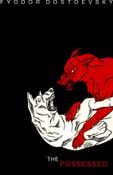
1.
The Possessed by Fyodor Dostoevsky (1872). Dostoevsky’s signature theme —the future of morality and the human soul in a Godless world —takes flight in this harrowing portrait of revolutionary terrorists who have surrendered their humanity to their ideals. The political satire throbs with urgency, but Dostoevsky raises this work to the level of art through rich characterizations of his combative principals: the well-meaning, ineffectual philosophical theorist Stepan Verkhovensky; his true-believing, monomaniacal son Peter; the conflicted, ” serf Shatov; and two vivid embodiments of good and evil —saintly Bishop Tikhon and urbane, satanic Nicolas Stavrogin.

2.
In Search of Lost Time by Marcel Proust (1913–27). It’s about time. No, really. This seven-volume, three-thousand-page work is only superficially a mordant critique of French (mostly high) society in the belle époque. Both as author and as “Marcel,” the first-person narrator whose childhood memories are evoked by a crumbling madeleine cookie, Proust asks some of the same questions Einstein did about our notions of time and memory. As we follow the affairs, the badinage, and the betrayals of dozens of characters over the years, time is the highway and memory the driver.
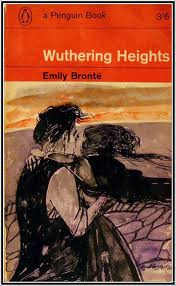
3.
Wuthering Heights by Emily Brontë (1847). The author’s only novel, published a year before her death, centers on the doomed love between Heathcliff, a tormented orphan, and Catherine Earnshaw, his benefactor’s vain and willful daughter. Passion brings them together, but class differences, and the bitterness it inspires, keeps them apart and continues to take its toll on the next generation. Wuthering Heights tells you why they say that love hurts.
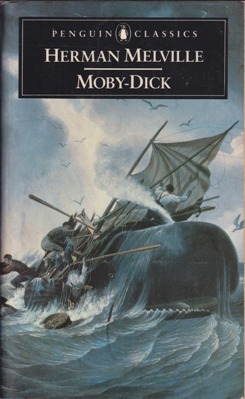
4.
Moby-Dick by Herman Melville (1851). This sweeping saga of obsession, vanity, and vengeance at sea can be read as a harrowing parable, a gripping adventure story, or a semiscientific chronicle of the whaling industry. No matter, the book rewards patient readers with some of fiction’s most memorable characters, from mad Captain Ahab to the titular white whale that crippled him, from the honorable pagan Queequeg to our insightful narrator/surrogate (“Call me”) Ishmael, to that hell-bent vessel itself, the Pequod.

5.
Ulysses by James Joyce (1922). Filled with convoluted plotting, scrambled syntax, puns, neologisms, and arcane mythological allusions, Ulysses recounts the misadventures of schlubby Dublin advertising salesman Leopold Bloom on a single day, June 16, 1904. As Everyman Bloom and a host of other characters act out, on a banal and quotidian scale, the major episodes of Homer’s Odyssey —including encounters with modern-day sirens and a Cyclops —Joyce’s bawdy mock-epic suggests the improbability, perhaps even the pointlessness, of heroism in the modern age.
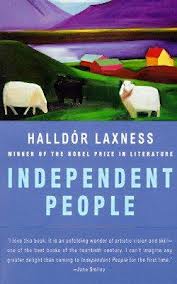
6.
Independent People by Halldór Laxness (1934). The Icelandic Nobel laureate’s best novel is a chronicle of endurance and survival, whose stubborn protagonist Bjartür “of Summerhouses” is a sheepherder at odds with inclement weather, poverty, society in particular and authority in general, and his own estranged family. Laxness unflinchingly dramatizes Bjartür’s unloving, combative relationships with his step-daughter Asta and frail son Nonni (a possible authorial surrogate)—yet finds the perverse heroism in this bad shepherd’s compulsive pursuit of freedom (from even the Irish sorcerer who had cursed his land). This is an antihero for whom readers will find themselves cheering.
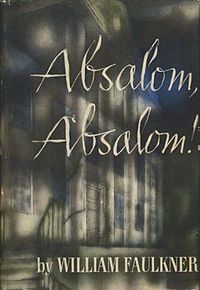
7.
Absalom, Absalom! by William Faulkner (1936). Weaving mythic tales of biblical urgency with the experimental techniques of high modernism, Faulkner bridged the past and future. This is the story of Thomas Sutpen, a rough-hewn striver who came to Mississippi in 1833 with a gang of wild slaves from Haiti to build a dynasty. Almost in reach, his dream is undone by plagues of biblical (and Faulknerian) proportions: racism, incest, war, fratricide, pride, and jealousy. Through the use of multiple narrators, Faulkner turns this gripping Yoknapatawpha saga into a profound and dazzling meditation on truth, memory, history, and literature itself.
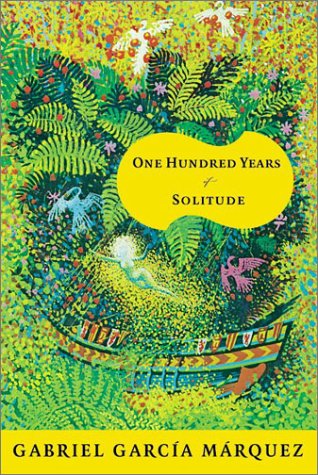
8.
One Hundred Years of Solitude by Gabriel García Márquez (1967). Widely considered the most popular work in Spanish since Don Quixote, this novel —part fantasy, part social history of Colombia — sparked fiction’s “Latin boom” and the popularization of magic realism. Over a century that seems to move backward and forward simultaneously, the forgotten and offhandedly magical village of Macondo — home to a Faulknerian plethora of incest, floods, massacres, civil wars, dreamers, prudes, and prostitutes — loses its Edenic innocence as it is increasingly exposed to civilization.
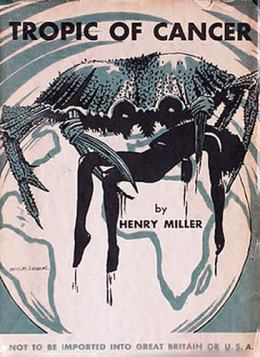
9.
Tropic of Cancer by Henry Miller (1934). Banned in America for twenty-seven years because it was considered obscene, this autobiographical novel describes the author’s hand-to-mouth existence in Paris during the early 1930s. A later inspiration to the Beat generation, Miller offers various philosophical interludes expressing his joy in life, hostility to social convention, and reverence for women and sex, which he describes with abandon.
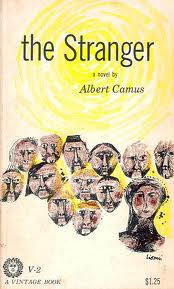
10.
The Stranger by Albert Camus (1942). The opening lines—“Mother died today. Or, maybe, yesterday. I can’t be sure”—epitomize Camus’s celebrated notions of “the absurd.” His narrator, Meursault, a wretched little Algerian clerk sentenced to death for the murder, feels nothing: no remorse, love, guilt, grief, or hope. But he’s not a sociopath; he’s just honest. An embodiment of existential philosophy, he believes in no higher power and accepts that we are born only to die. Our only choice is to act “as if” life has meaning and thereby gain some freedom.
 1. The Possessed by Fyodor Dostoevsky (1872). Dostoevsky’s signature theme —the future of morality and the human soul in a Godless world —takes flight in this harrowing portrait of revolutionary terrorists who have surrendered their humanity to their ideals. The political satire throbs with urgency, but Dostoevsky raises this work to the level of art through rich characterizations of his combative principals: the well-meaning, ineffectual philosophical theorist Stepan Verkhovensky; his true-believing, monomaniacal son Peter; the conflicted, ” serf Shatov; and two vivid embodiments of good and evil —saintly Bishop Tikhon and urbane, satanic Nicolas Stavrogin.
1. The Possessed by Fyodor Dostoevsky (1872). Dostoevsky’s signature theme —the future of morality and the human soul in a Godless world —takes flight in this harrowing portrait of revolutionary terrorists who have surrendered their humanity to their ideals. The political satire throbs with urgency, but Dostoevsky raises this work to the level of art through rich characterizations of his combative principals: the well-meaning, ineffectual philosophical theorist Stepan Verkhovensky; his true-believing, monomaniacal son Peter; the conflicted, ” serf Shatov; and two vivid embodiments of good and evil —saintly Bishop Tikhon and urbane, satanic Nicolas Stavrogin. 2. In Search of Lost Time by Marcel Proust (1913–27). It’s about time. No, really. This seven-volume, three-thousand-page work is only superficially a mordant critique of French (mostly high) society in the belle époque. Both as author and as “Marcel,” the first-person narrator whose childhood memories are evoked by a crumbling madeleine cookie, Proust asks some of the same questions Einstein did about our notions of time and memory. As we follow the affairs, the badinage, and the betrayals of dozens of characters over the years, time is the highway and memory the driver.
2. In Search of Lost Time by Marcel Proust (1913–27). It’s about time. No, really. This seven-volume, three-thousand-page work is only superficially a mordant critique of French (mostly high) society in the belle époque. Both as author and as “Marcel,” the first-person narrator whose childhood memories are evoked by a crumbling madeleine cookie, Proust asks some of the same questions Einstein did about our notions of time and memory. As we follow the affairs, the badinage, and the betrayals of dozens of characters over the years, time is the highway and memory the driver. 3. Wuthering Heights by Emily Brontë (1847). The author’s only novel, published a year before her death, centers on the doomed love between Heathcliff, a tormented orphan, and Catherine Earnshaw, his benefactor’s vain and willful daughter. Passion brings them together, but class differences, and the bitterness it inspires, keeps them apart and continues to take its toll on the next generation. Wuthering Heights tells you why they say that love hurts.
3. Wuthering Heights by Emily Brontë (1847). The author’s only novel, published a year before her death, centers on the doomed love between Heathcliff, a tormented orphan, and Catherine Earnshaw, his benefactor’s vain and willful daughter. Passion brings them together, but class differences, and the bitterness it inspires, keeps them apart and continues to take its toll on the next generation. Wuthering Heights tells you why they say that love hurts. 4. Moby-Dick by Herman Melville (1851). This sweeping saga of obsession, vanity, and vengeance at sea can be read as a harrowing parable, a gripping adventure story, or a semiscientific chronicle of the whaling industry. No matter, the book rewards patient readers with some of fiction’s most memorable characters, from mad Captain Ahab to the titular white whale that crippled him, from the honorable pagan Queequeg to our insightful narrator/surrogate (“Call me”) Ishmael, to that hell-bent vessel itself, the Pequod.
4. Moby-Dick by Herman Melville (1851). This sweeping saga of obsession, vanity, and vengeance at sea can be read as a harrowing parable, a gripping adventure story, or a semiscientific chronicle of the whaling industry. No matter, the book rewards patient readers with some of fiction’s most memorable characters, from mad Captain Ahab to the titular white whale that crippled him, from the honorable pagan Queequeg to our insightful narrator/surrogate (“Call me”) Ishmael, to that hell-bent vessel itself, the Pequod. 5. Ulysses by James Joyce (1922). Filled with convoluted plotting, scrambled syntax, puns, neologisms, and arcane mythological allusions, Ulysses recounts the misadventures of schlubby Dublin advertising salesman Leopold Bloom on a single day, June 16, 1904. As Everyman Bloom and a host of other characters act out, on a banal and quotidian scale, the major episodes of Homer’s Odyssey —including encounters with modern-day sirens and a Cyclops —Joyce’s bawdy mock-epic suggests the improbability, perhaps even the pointlessness, of heroism in the modern age.
5. Ulysses by James Joyce (1922). Filled with convoluted plotting, scrambled syntax, puns, neologisms, and arcane mythological allusions, Ulysses recounts the misadventures of schlubby Dublin advertising salesman Leopold Bloom on a single day, June 16, 1904. As Everyman Bloom and a host of other characters act out, on a banal and quotidian scale, the major episodes of Homer’s Odyssey —including encounters with modern-day sirens and a Cyclops —Joyce’s bawdy mock-epic suggests the improbability, perhaps even the pointlessness, of heroism in the modern age. 6. Independent People by Halldór Laxness (1934). The Icelandic Nobel laureate’s best novel is a chronicle of endurance and survival, whose stubborn protagonist Bjartür “of Summerhouses” is a sheepherder at odds with inclement weather, poverty, society in particular and authority in general, and his own estranged family. Laxness unflinchingly dramatizes Bjartür’s unloving, combative relationships with his step-daughter Asta and frail son Nonni (a possible authorial surrogate)—yet finds the perverse heroism in this bad shepherd’s compulsive pursuit of freedom (from even the Irish sorcerer who had cursed his land). This is an antihero for whom readers will find themselves cheering.
6. Independent People by Halldór Laxness (1934). The Icelandic Nobel laureate’s best novel is a chronicle of endurance and survival, whose stubborn protagonist Bjartür “of Summerhouses” is a sheepherder at odds with inclement weather, poverty, society in particular and authority in general, and his own estranged family. Laxness unflinchingly dramatizes Bjartür’s unloving, combative relationships with his step-daughter Asta and frail son Nonni (a possible authorial surrogate)—yet finds the perverse heroism in this bad shepherd’s compulsive pursuit of freedom (from even the Irish sorcerer who had cursed his land). This is an antihero for whom readers will find themselves cheering. 7. Absalom, Absalom! by William Faulkner (1936). Weaving mythic tales of biblical urgency with the experimental techniques of high modernism, Faulkner bridged the past and future. This is the story of Thomas Sutpen, a rough-hewn striver who came to Mississippi in 1833 with a gang of wild slaves from Haiti to build a dynasty. Almost in reach, his dream is undone by plagues of biblical (and Faulknerian) proportions: racism, incest, war, fratricide, pride, and jealousy. Through the use of multiple narrators, Faulkner turns this gripping Yoknapatawpha saga into a profound and dazzling meditation on truth, memory, history, and literature itself.
7. Absalom, Absalom! by William Faulkner (1936). Weaving mythic tales of biblical urgency with the experimental techniques of high modernism, Faulkner bridged the past and future. This is the story of Thomas Sutpen, a rough-hewn striver who came to Mississippi in 1833 with a gang of wild slaves from Haiti to build a dynasty. Almost in reach, his dream is undone by plagues of biblical (and Faulknerian) proportions: racism, incest, war, fratricide, pride, and jealousy. Through the use of multiple narrators, Faulkner turns this gripping Yoknapatawpha saga into a profound and dazzling meditation on truth, memory, history, and literature itself. 8. One Hundred Years of Solitude by Gabriel García Márquez (1967). Widely considered the most popular work in Spanish since Don Quixote, this novel —part fantasy, part social history of Colombia — sparked fiction’s “Latin boom” and the popularization of magic realism. Over a century that seems to move backward and forward simultaneously, the forgotten and offhandedly magical village of Macondo — home to a Faulknerian plethora of incest, floods, massacres, civil wars, dreamers, prudes, and prostitutes — loses its Edenic innocence as it is increasingly exposed to civilization.
8. One Hundred Years of Solitude by Gabriel García Márquez (1967). Widely considered the most popular work in Spanish since Don Quixote, this novel —part fantasy, part social history of Colombia — sparked fiction’s “Latin boom” and the popularization of magic realism. Over a century that seems to move backward and forward simultaneously, the forgotten and offhandedly magical village of Macondo — home to a Faulknerian plethora of incest, floods, massacres, civil wars, dreamers, prudes, and prostitutes — loses its Edenic innocence as it is increasingly exposed to civilization. 9. Tropic of Cancer by Henry Miller (1934). Banned in America for twenty-seven years because it was considered obscene, this autobiographical novel describes the author’s hand-to-mouth existence in Paris during the early 1930s. A later inspiration to the Beat generation, Miller offers various philosophical interludes expressing his joy in life, hostility to social convention, and reverence for women and sex, which he describes with abandon.
9. Tropic of Cancer by Henry Miller (1934). Banned in America for twenty-seven years because it was considered obscene, this autobiographical novel describes the author’s hand-to-mouth existence in Paris during the early 1930s. A later inspiration to the Beat generation, Miller offers various philosophical interludes expressing his joy in life, hostility to social convention, and reverence for women and sex, which he describes with abandon. 10. The Stranger by Albert Camus (1942). The opening lines—“Mother died today. Or, maybe, yesterday. I can’t be sure”—epitomize Camus’s celebrated notions of “the absurd.” His narrator, Meursault, a wretched little Algerian clerk sentenced to death for the murder, feels nothing: no remorse, love, guilt, grief, or hope. But he’s not a sociopath; he’s just honest. An embodiment of existential philosophy, he believes in no higher power and accepts that we are born only to die. Our only choice is to act “as if” life has meaning and thereby gain some freedom.
10. The Stranger by Albert Camus (1942). The opening lines—“Mother died today. Or, maybe, yesterday. I can’t be sure”—epitomize Camus’s celebrated notions of “the absurd.” His narrator, Meursault, a wretched little Algerian clerk sentenced to death for the murder, feels nothing: no remorse, love, guilt, grief, or hope. But he’s not a sociopath; he’s just honest. An embodiment of existential philosophy, he believes in no higher power and accepts that we are born only to die. Our only choice is to act “as if” life has meaning and thereby gain some freedom.
No comments:
Post a Comment